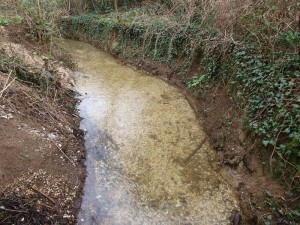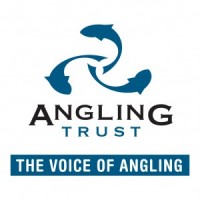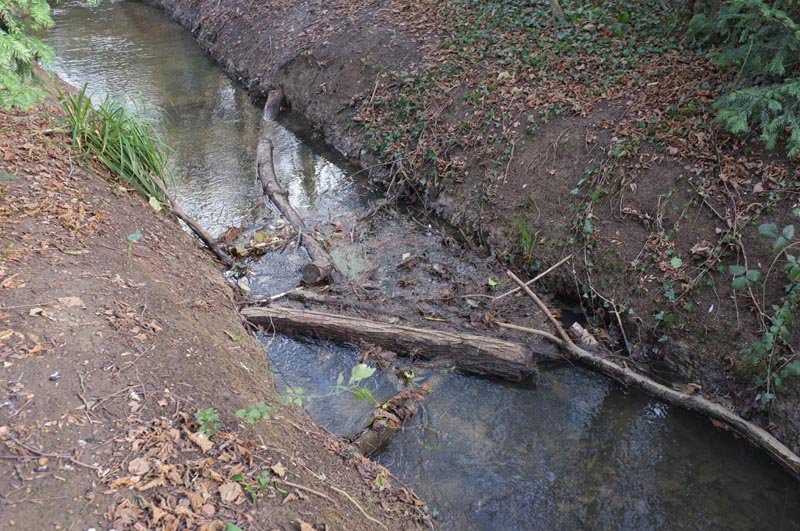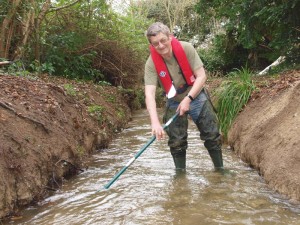-
- Buy a UK rod licence: EA Link
- 0800 807060 EA Hotline, Pollution, Poaching
- Thames Region River Levels
- Thames River Conditions
- Thames Temps and Clarity
- Thames Fishing Byelaws
- Thames Annual Tidefest
- Thames Record List
- Thames Eel Monitoring
- EA Annual Fisheries Report
- EA Flood Warnings
- Thames Sewage Discharge Notifications
- Thames Sewage Events
- Thames Tideway Tunnel
- River Thames Scheme: Reducing flood risk from Datchet to Teddington
- Martin Salter: Fighting for Fishing Blog
- Duncan Charmans World of Angling Blog
- Angling Trust
- Water and sewerage companies in England: environmental performance report 2013 – 2016
- EA Pollution incidents: 2014 evidence summary
- EA Pollution incidents: 2015 evidence summary
- River Crane and DNR Fisheries Impact assessment
- Links
Recent Tweets
Error retrieving tweetsNews Archive
Angling Trust and Angling Development Board Merger Completed
This is the latest and most significant stage in the unification of angling in England since the formation of the Angling Trust in 2009. The addition of the ADB to the Angling Trust will include 700 licensed coaches, 12 regional and local angling development officers, 30 County Angling Action Groups and a wide range of ongoing programmes and projects at a local and national scale to increase participation in angling by people of all backgrounds and ages.
Over the past 3 years, the ADB has worked with Sport England and the Environment Agency and has involved more than 17,000 people in participation events, has developed and implemented a single licensing system for coaches, and has raised nearly £300,000 in match funding from local sources. All this work will continue under the banner of the Angling Trust and will be integrated with other elements of the Trust’s work, such as the management of national and international competitions.
The first phase of a funding bid is currently being prepared for the next round of Sport England Funding for the period April 2013 to 2017. This bid will form part of a national angling participation action plan which will be developed over the coming months in partnership with other organisations in the sector to create a coherent plan to sustain and grow angling participation and the social, economic and environmental benefits arising from angling.
ADB Chairman David Moore said: “This merger creates an organisation which is greater than the sum of its parts. It combines two strong, professional teams and the work of angling’s development organisation with the responsibilities and ambitions of the sport’s membership body. Campaigns and legal work to protect and improve angling access and fish stocks are equivalent to other sports’ campaigns for playing fields and they safeguard opportunities for more people to go fishing. The creation of our pathway events for talented young anglers will increase the quality of those in our future Team England Angling and will provide more opportunities for sponsors to support our national teams. We have come a long way in 5 years and built the new foundations that our sport needed for a changing world.’’
Angling Trust Chairman Mike Heylin said: “This is an historic day for angling. Previous attempts at unification have failed over the past 50 years, but no-one can be in any doubt today that we have at last a high profile and successful organisation to represent anglers and to develop, promote and grow the sport of angling for generations to come. This merger will increase our capacity to find positive and creative solutions to the challenges facing angling in the modern age. We must aim for a time when anyone who wants to take up the wonderful sport of angling has good information about where to get access to safe, good quality fishing near where they live, how to fish responsibly, where to get high quality coaching and how they can find other people to go fishing with through clubs, social fishing networks or matches.”
Lisa O’Keefe, Director of Sport for Sport England, witnessed the signatures of the two Chairmen in London and said: "This is an exciting development for the sport of angling and one which Sport England supports wholeheartedly. The Angling Trust as a single governing body for the sport will be able to build on the infrastructure developed by the Angling Development Board over the past five years to develop the sport and get more people fishing regularly."
Parts of Yorkshire are now officially in Drought
 The Environment Agency has today confirmed that parts of Yorkshire are now officially in drought. The drought conditions apply to catchments of the River Don, the River Rother, the River Hull, and the River Derwent.
The Environment Agency has today confirmed that parts of Yorkshire are now officially in drought. The drought conditions apply to catchments of the River Don, the River Rother, the River Hull, and the River Derwent.
The Environment Agency is concerned about the effect of the drought on the environment. Yorkshire Water does not currently anticipate any impact on the public water supply but is continually reviewing the situation. The decision to declare drought was taken after several months of below-average rainfall combined with a forecast that the dry spell will continue over the next few months. The lack of rain has led to low groundwater levels, particularly in the Hull catchment, and low river levels across all the affected catchments. In the Hull and the Don catchments, rainfall figures show it is the second driest 12 months on record since 1910, and an Environment Agency rain gauge near the River Rye in the Derwent catchment has had six consecutive months of below average rainfall.
Ben Hughes, the Environment Agency’s drought manager for Yorkshire, said: “The dry spell is forecast to continue over the next few months. We have been working with Yorkshire Water and it is not anticipated that there will be an impact on public water supplies at this stage. However, we expect to see lower river levels, and some small springs and streams drying up, which will affect people who use those waterways, as well as fish and other wildlife.
“Our job is to balance the needs of people, the environment, agriculture and industry so that there is enough water to go round. Everyone has a part to play in making sure that we use water efficiently and even small changes can make a big difference to the overall picture.”
This winter the Environment Agency in Yorkshire took the unusual step of restricting the amount of water which could be abstracted in some areas. If the drier conditions continue, more water abstraction licence holders may be affected to protect the environment.
Ben said: “We are appealing to all water abstractors, including farmers and businesses, to look for ways to share and make the best use of a limited water resource.”
The Environment Agency is also encouraging abstractors to work closely with its staff to help manage the situation effectively.
Yorkshire Water spokesman Matt Thompson said: “We continue to work hard to manage and balance our stocks of water, particularly in the east of the region where borehole levels are 20 per cent lower than would normally be expected for this time of year.
“To support what we're doing, we'd encourage customers to continue to do all they can to conserve water and use only what they need. For advice and tips on how to save water, visit yorkshirewater.com/savewater.”
Today’s news comes on the day that the Government announced the launch of the "Love your River" campaign which is aimed at inspiring people to look after their rivers by using water wisely.
The amount of water that we use at home and in our businesses has a direct effect on the amount of water available in our rivers and for wildlife.
Posted in News
Tagged Drought, Environment Agency, Flood
Comments Off on Parts of Yorkshire are now officially in Drought
South West Water fined for offences at sewage treatment works
 South West Water has been ordered to pay £11,406 in fines and costs for discharging poor quality effluent into a Devon river.
South West Water has been ordered to pay £11,406 in fines and costs for discharging poor quality effluent into a Devon river.
The case was brought by the Environment Agency. The water company’s sewage works at Lee Mill near Plymouth receives and treats sewage from homes and businesses in the surrounding area. Treated effluent is discharged into the River Yealm, an important fishery for salmon and sea trout. There is also a shellfishery further downstream. The effluent, which undergoes biological treatment, must be of a certain quality before it is discharged from the treatment works.
The precise standard is laid down in the Environment Agency permit for the site. Levels of ammonia, suspended solids and biochemical oxygen demand (BOD) must be kept within certain limits to minimise any impact on the environment. Over a 12 month period from January 28, 2011 samples of treated final effluent at Lee Mill exceeded permitted levels on five occasions and were found to be of an unacceptable standard.
These breaches included samples containing excessive biochemical oxygen demand and suspended solids. ‘Operators of sewage treatment works must make every effort to remain compliant with their permits. This is especially important where effluent is discharged into catchments like the River Yealm that hold important numbers of salmon and sea trout. These fish are more susceptible to pollution and need much cleaner water than other species,’ said Ted Pritchard for the Environment Agency. Appearing before Plymouth magistrates, South West Water of Peninsula House, Rydon Lane, Exeter was fined a total of £10,000 and ordered to pay £1,406 costs after pleading guilty to five offences of breaching a condition of its permit at Lee Mill sewage treatment works contrary to Environmental Permitting (England and Wales) Regulations 2010. The case was heard on March 19, 2012.
West Thames Area Drought Statistics
 The Environment Agency has published its monthly statistics for the West Thames Area showing rainfall at its lowest since records began.
The Environment Agency has published its monthly statistics for the West Thames Area showing rainfall at its lowest since records began.
(Picture: Thames Water)
The data, courtesy of the EA West Thames Team shows just how severe the situation is:
Summary – February 2012
February was another dry month with below average rainfall for West Thames Area. Rainfall has been below average in 12 of the 17 months since October 2012, resulting in the second driest corresponding October to February period since records began in 1920. Mean February river flows were exceptionally or notably low for the time of year at 14 of our 15 indicator sites and groundwater levels at the end of February were notably or exceptionally low at 9 of our 11 indicator sites.
On the 20th February the south east of England officially moved into drought status. Rainfall February was another dry month with 42% of the long-term average monthly rainfall. About half of this fell as snow on the 4th which melted gradually over three days. The five months from October to February had two-thirds of their usual rainfall making this the second consecutive winter with below average rainfall. The 17 months since October 2010 have been the second driest corresponding period for West Thames Area since records began in 1920; only 1922 was drier.
On the 20th February the south east of England officially moved into drought status.
Soil Moisture Deficit/Recharge
Significant soil moisture deficits remained in the Berkshire Downs, Chilterns, Ock and Thame catchments at the end of February. This is very unusual for the time of year, when winter rainfall has usually wetted up the soil, allowing groundwater recharge. The dry soils mean that effective rainfall from October to February was just 17% of the long term average for this period. This is compounding the effects of last winter, when the six months from October to March saw only 51% of the usual winter recharge.
River Flows Mean monthly river flows in February were notably low at seven of our indicator sites, exceptionally low at another seven and below normal at one, the River Wye. On most rivers, status deteriorated from January to February, most notably on the River Wey and the River Loddon, where flows had previously been sustained by slightly higher rainfall and groundwater levels.
The lowest mean February flow since 1976 was recorded on two groundwater-fed rivers – the River Coln at Bibury and the River Kennet at Theale – and on two rivers dependent on regular rainfall – the River Cherwell at Banbury and the River Evenlode at Cassington.
Groundwater Levels
Groundwater levels in the Chalk at the end of February were notably low at three sites (Rockley, Gibbet Cottages and Tile Barn Farm) and exceptionally low at Stonor Park where the level was below the current detection limit. In the Oolitic limestone of the Cotswolds, the groundwater level was below normal at Ampney Crucis and exceptionally low at Jackaments Bottom and Fringford.
The full report is available here as a PDF
Thames Spawning Channel Receives Welcome New Gravel
 The Thames Anglers Conservancy and West Thames Fisheries officers joined forces to put seven tons of new gravel into the spawning channel at Penton Hook as part of an ongoing project.
The Thames Anglers Conservancy and West Thames Fisheries officers joined forces to put seven tons of new gravel into the spawning channel at Penton Hook as part of an ongoing project.
New habitat in the Channel
Ten volunteers from TACworked with Environment Agency West Thames Fisheries Officers Matt Drew and Stuart Keable to place seven tons of new gravel into the channel on Penton Hook lock island to improve spawning habitat for a wide range of species including chub and dace. The work is part of an ongoing joint project between the EA and TAC which stated in 2011to deliver WFD outcomes and promote angling on the Thames.
The one ton bags were delivered onto the island by barge and TAC volunteers used barrows, rakes and shovels to place within the channel.
TAC volunteers and the EA with the gravel
The day followed the channel clearance operation carried out as a joint venture several weeks earlier when many in river obstructions were removed.
A section of channel before habitat improvement works started in January
 All the gravel was put in by hand along a silty section of the channel using wheel barrows and shovels. The gravel was a mixture of 10, 20 and 40 millimetre in size.
All the gravel was put in by hand along a silty section of the channel using wheel barrows and shovels. The gravel was a mixture of 10, 20 and 40 millimetre in size.
Raking the gravel into the spawning channel
We would like to thank all the volunteers who joined us at intervals during the day and the West Thames team for providing much of the equipment and welcome refreshments.
TAC
The Big One – Record numbers join the Angling Trust
 The Angling Trust signed up a record 160 new members at the UK's biggest tackle show last weekend – 'The Big One' at Farnborough Airfield, Surrey.
The Angling Trust signed up a record 160 new members at the UK's biggest tackle show last weekend – 'The Big One' at Farnborough Airfield, Surrey.
Angling Trust staff and volunteers also collected hundreds of signatures on the Avon Roach project's petition to get cormorants added to the general shooting licence to make it easier for angling clubs and fishery managers to protect threatened fish stocks. Celebrities on the stall included England Team Manager Dick Clegg, Sky TV's Keith Arthur, World Champion Will Raison and River Monsters star Jeremy Wade.
On Saturday newly appointed Angling Trust National Campaigns Co-ordinator Martin Salter worked on the stall in between his engagements in the Lecture Theatre. The show's organisers, Vince Davies and Colin Rumney put on the huge event in an amazing fully carpeted 12,000 square metre of space featuring top class fishing gear, theatre seminars and celebrity hot tips.
Martin Salter says: "This year's Big One was a huge success and it's hard to believe we are in the middle of a recession. We signed up a record number of new members for a single weekend and we are immensely grateful to both Vince and Colin for giving us the opportunity to promote our work on behalf of anglers at the UK's premier tackle show. Our message to anglers was clear – the Angling Trust is YOUR voice in the corridors of power, come and join us and make us even more effective and let us know what you think we should be fighting for in the future."
Angling Trust Membership Manager Will Smith says: "Membership numbers have grown steadily in all categories for the past 9 months and this year we have been inundated with renewals and new applications from individuals, clubs and commercial fisheries. We are really grateful to all the staff and volunteers who gave up their time to help out on the stand. I'd love to hear from any Angling Trust members who would like to volunteer at other shows we will be attending in 2012."
Year on year efforts are made to improve the show and this year anglers were introduced to new holiday companies from as far afield as Thailand, Kenya, France, Spain, Ireland and Argentina as well as meeting some of the countries' leading bait manufacturers and leading discount wholesalers and retailers.
TAC Newsletter Spring 2012
Posted in News
Tagged Environment Agency, Hydropower, Super Sewer, TAC, Tideway Tunnel
Leave a comment




